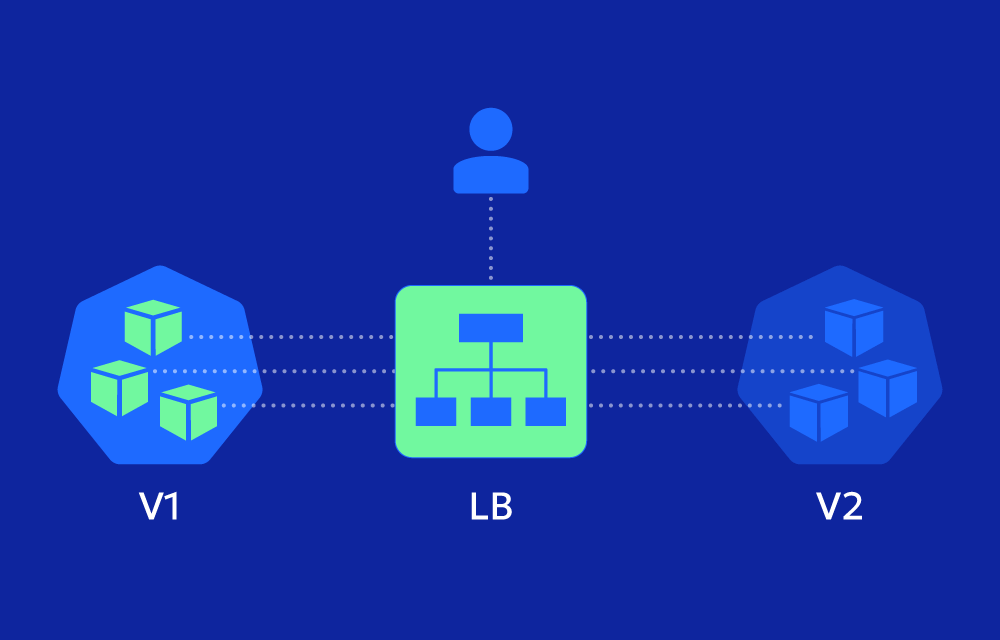Imagine you’re testing a new dish at your restaurant. You serve it alongside the usual crowd favorites, but only to a select group of staff or testers who’ll give you feedback before you put it on the main menu. That’s essentially what a shadow deployment is in the world of software engineering.
Why Use Shadow Deployments?
Shadow deployments are like having a safety net during a tightrope walk. They allow you to:
- Test in a real-world environment: Since the new version works with live data, you’ll know exactly how it behaves under actual conditions.
- Validate performance and scalability: Does the new version hold up when thousands of users are accessing your system? A shadow deployment gives you answers without jeopardizing your live app.
- Catch issues early: Because you’re seeing how it handles real-world traffic, any bugs, crashes, or performance bottlenecks become glaringly obvious.
How Shadow Deployments Work
Here’s the play-by-play:
- Mirror traffic: Your live app receives incoming requests, and those same requests are sent to the shadow deployment.
- Separate outputs: The live app’s responses are sent to users as usual. The shadow deployment processes requests too, but its results are logged and analyzed internally without affecting users.
- Analyze and compare: Compare the performance and outputs of the shadow deployment with the live version. This analysis will tell you if the new version is ready to take center stage.
Example of Shadow Deployment in Action
Let’s say your team is rolling out a new recommendation engine for your e-commerce app. In a shadow deployment, live user requests for product recommendations are processed by both the existing algorithm and the new one. However, only the results from the old algorithm are displayed to users. Meanwhile, you log and analyze the new algorithm’s output to evaluate its accuracy, response time, and potential improvements.
Deep Dive: Setting Up a Shadow Deployment
- Infrastructure Planning:
- Allocate sufficient resources for the shadow deployment. Since the new version will process the same traffic as the live version, you need to ensure it has the capacity to handle the load.
- Use container orchestration tools like Kubernetes to manage resource allocation effectively.
- Traffic Mirroring:
- Set up a mechanism to duplicate traffic from the live environment to the shadow deployment. Tools like Envoy, Istio, or AWS’s VPC Traffic Mirroring can help achieve this.
- Ensure that mirrored traffic doesn’t impact the performance of the live system.
- Logging and Monitoring:
- Use logging tools like ELK Stack (Elasticsearch, Logstash, Kibana) or Grafana to capture detailed metrics from the shadow deployment.
- Monitor key performance indicators (KPIs) such as response times, error rates, and resource utilization.
- Data Handling:
- Ensure sensitive user data is handled securely and complies with data protection regulations like GDPR or CCPA.
- Mask or anonymize data in the shadow environment if necessary.
- Output Comparison:
- Use automated tools to compare the output of the live version and shadow deployment. For example, a mismatched result might indicate a bug in the new version.
- Establish acceptable thresholds for differences in performance or output.
Pros and Cons of Shadow Deployments
Pros:
- Realistic testing: By working with live data, shadow deployments provide unparalleled insights into how the new version performs under actual conditions.
- Minimal risk: Users remain unaffected since they’re interacting only with the live version.
- Incremental validation: You can iterate on the new version’s performance based on the data collected.
Cons:
- High resource demands: Running two versions simultaneously requires significant computational resources.
- Operational complexity: Setting up traffic mirroring, ensuring data security, and analyzing results can be challenging.
- Latency risks: Improper configurations might inadvertently introduce latency into the live system.
Best Practices for Succesful Shadow Deployments
Shadow deployments are an excellent strategy for testing new versions of an application in real-world conditions. However, their success hinges on careful planning and execution. Here’s how to ensure you make the most of them:
1. Start Small and Scale Gradually
When starting with shadow deployments, resist the temptation to mirror all traffic at once. Begin with a small subset of traffic to:
- Minimize the initial impact on infrastructure resources.
- Simplify debugging if issues arise.
For example, if your application serves multiple customer segments, you could start by mirroring requests from a low-priority or less active segment. Tools like AWS App Mesh or Envoy can help route and mirror specific traffic subsets effectively.
As you gain confidence, gradually increase the mirrored traffic volume while monitoring performance and stability. This incremental approach ensures you catch issues early without overloading your infrastructure.
2. Define Clear Testing Goals
Before deploying a shadow system, establish specific, measurable objectives. Are you validating:
- The accuracy of a new machine learning model?
- Improvements in response time and latency?
- The handling of edge cases or unexpected inputs?
For example, if testing a recommendation engine, define metrics like precision, recall, and processing time. Use tools like Prometheus or Datadog to collect and visualize these metrics during the shadow deployment phase.
3. Automate Output Analysis
Manually comparing outputs from the live and shadow deployments can quickly become unmanageable. Automating this process ensures consistency and saves time. Here’s how:
- Use automated diff tools or scripts to compare responses. For example, tools like DeepDiff in Python can identify differences between complex JSON outputs.
- Set up thresholds to flag significant discrepancies while ignoring minor, non-impactful variations.
- Generate detailed reports to share findings with your team, helping prioritize issues.
4. Iterate and Optimize Based on Findings
Shadow deployments often reveal unexpected insights. Use these findings to:
- Tweak configurations, such as memory allocation or API rate limits.
- Fix any bugs uncovered during real-world testing.
- Optimize performance by analyzing resource bottlenecks.
For instance, if you notice the shadow system’s response times lagging behind the live system, investigate whether database queries or external API calls are causing the delay. Tools like New Relic or Dynatrace can provide detailed performance traces to guide optimizations.
5. Plan and Test Rollback Strategies
No deployment strategy is foolproof, and shadow deployments are no exception. Always have a rollback plan in case the new version doesn’t perform as expected. Here’s what to consider:
- Maintain backups of your current system’s configurations and data.
- Use version control systems like Git to easily revert code changes.
- Test rollback procedures in a staging environment to ensure they’re reliable under real-world conditions.
For example, if your shadow deployment is testing a new database schema, ensure scripts for rolling back to the old schema are ready and have been tested thoroughly.
When Should You Use Shadow Deployments?
Shadow deployments are most useful in the following scenarios:
- High-risk updates: When introducing critical changes, such as a new pricing algorithm or payment gateway.
- Scaling experiments: Testing how well a new version handles increased traffic loads.
- Regulatory compliance: Validating updates to ensure they meet new compliance requirements without affecting the live system.
- Machine learning models: Evaluating the performance of new models against live data without user exposure.
Overcoming Hurdles in Shadow Deployments
While shadow deployments provide invaluable insights, they aren’t without challenges. Here are the primary issues to consider and address:
1. Data Consistency Issues
Live systems handle dynamic and ever-changing data, and ensuring the shadow deployment processes this data consistently is crucial. Even minor timing differences or variations in logic can lead to discrepancies, complicating comparisons. To tackle this, you can:
- Synchronize data feeds using reliable traffic mirroring tools.
- Regularly validate that the shadow system is interpreting data accurately.
2. Increased Resource Demands
Running parallel deployments means doubling the load on your infrastructure. This can lead to higher costs and potential performance bottlenecks if not managed properly. Strategies to address this include:
- Monitoring resource usage closely to optimize allocations.
- Leveraging cloud tools for dynamic scaling based on load.
3. Misleading Discrepancies (False Positives)
Not all differences between live and shadow systems indicate real problems. Discrepancies can arise due to factors like:
- Variances in processing sequences or caching behavior.
- Non-critical differences in output formats.
Establishing thresholds for acceptable variations and automating comparison processes can help reduce the noise and focus on genuine issues.
4. Data Privacy and Security Risks
Handling live traffic in a shadow environment introduces potential risks around sensitive data. Mishandling this information can result in breaches or compliance violations. To minimize risks:
- Mask or anonymize sensitive data wherever possible.
- Ensure robust encryption for data in transit and at rest.



